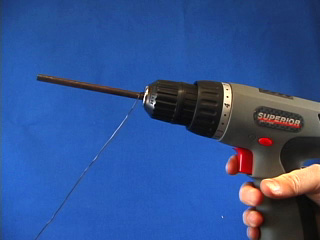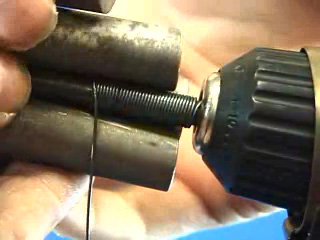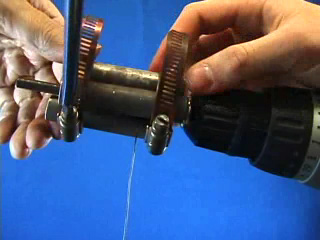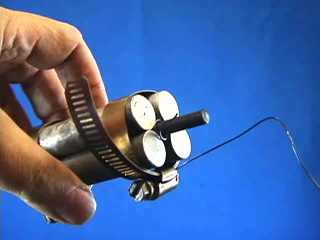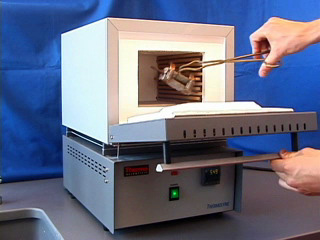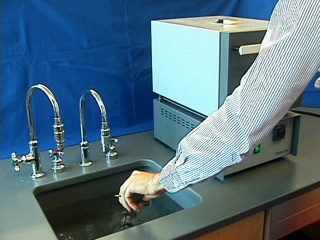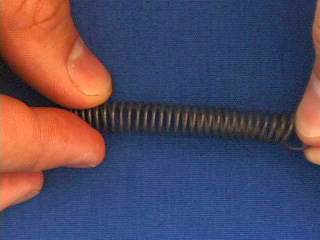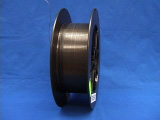
Training a NiTi Spring
This procedure was developed by Andrew Bartles and George Lisensky.
Shape memory alloy (SMA) wire can be "set" into a new shape by heat treatment while holding the wire in the desired shape. Since SMAs exert substantial forces during this heating, a relatively strong heat resistant jig capable of withstanding forces exerted by the NiTi wire and temperatures up to 600 degrees Celsius must be used. This experiment uses four pieces of aluminum rod and two hose clamps as the jig.
| Procedure | Wear eye protection |
Thermal gloves recommended |
Insert a steel rod in an electric drill. Use the chuck that holds the rod to also hold one end of the NiTi wire. Use the drill to slowly rotate the rod and wind the wire. Slide a hose clamp to one end of the wound wire. Place four aluminium rods around the wound wire. Put the hose clamp around the rods. Tighten the hose clamp. Tighten a second hose clamp around the other end of the rods. Remove the assembly from the drill. Heat the assembly at 550 °C for 15 minutes. Remove from the oven and quench the entire assembly in water to cool. Remove the hose clamps. The wire will retain the coil shape. The coil is only a spring in the high temperature phase. The Nitinol wire is available in large quantities (300 ft. lot, alloy type SM-495 martensite, straight, black oxide finish, diameter 0.0315 in.) from Nitinol Devices and Components.
5/8" diameter aluminum rod (McMaster-Carr) cut into four 10 cm lengths.
1/4" diameter steel rod, longer than the aluminum pieces (McMaster-Carr).
Two worm-drive hose clamps (McMaster-Carr). 0.5" x 8"
Oven capable of 550 degrees C.
Developed in collaboration with the
University of Wisconsin Materials Research Science and Engineering Center
Interdisciplinary Education Group | MRSEC on Nanostructured Interfaces
This page created by George Lisensky, Beloit College. Last modified July 2, 2013 .
University of Wisconsin Materials Research Science and Engineering Center
Interdisciplinary Education Group | MRSEC on Nanostructured Interfaces
This page created by George Lisensky, Beloit College. Last modified July 2, 2013 .
